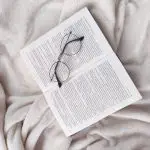When it comes to sewing, choosing the right fabric can make all the difference. Like a well-oiled machine, certain fabrics can make your sewing projects a breeze. You want to master your craft, and that starts with the right materials.
So, what are the top 5 easy-to-sew fabrics? Let's dive in and explore the best options for your next project.
Cotton, linen, flannel, fleece, and knit jersey are the top contenders. These fabrics are not only beginner-friendly, but also versatile and forgiving, making them ideal for honing your sewing skills.
Whether you're a seasoned seamstress or just starting out, these fabrics will make your sewing experience smooth and enjoyable.
Key Takeaways
- Cotton and linen are versatile fabrics that are widely available and easy to sew with.
- Pre-washing the fabric is important to prevent shrinkage.
- Using sharp needles and longer stitch length can prevent puckering.
- Understanding fabric properties and using the right techniques for each fabric type is essential for successful sewing.
Cotton
If you're looking for an easy fabric to sew, cotton is a great choice due to its versatility and forgiving nature. Cotton benefits sewers in various ways. Firstly, it's widely available in different weights and weaves, making it suitable for a wide range of sewing projects from clothing to home decor. Additionally, cotton is machine washable, durable, and comfortable to wear, adding to its appeal as a sewing fabric. When considering cotton vs. silk, which is easier to sew, cotton generally takes the lead due to its stability and ease of handling.
When sewing with cotton, there are a few tips to keep in mind. Pre-washing the fabric is essential to prevent shrinkage of the final garment. Furthermore, using a sharp needle and a slightly longer stitch length can help prevent puckering and ensure smooth sewing. It's also advisable to use pins minimally, as they can leave visible holes in the fabric.
Linen
When you're looking for a fabric that's easy to sew, linen is a great option due to its natural fibers and smooth texture. Linen benefits include breathability, durability, and a natural luster, making it an ideal choice for various sewing projects.
Here are some tips for working with linen:
- Pre-wash: Before starting your project, it's important to pre-wash linen to account for any potential shrinkage. This step will also soften the fabric and make it more manageable during the sewing process.
- Cutting and pressing: When working with linen, ensure that you cut along the grain to prevent distortion. Additionally, use a hot iron to press the fabric, as linen responds well to heat and steam, resulting in crisp seams.
- Seam finishes: Due to linen's tendency to fray, consider using seam finishes such as French seams or pinking shears to prevent unraveling and give your project a polished look.
For linen care instructions, it's best to hand wash or use the gentle cycle on your machine with a mild detergent. Avoid using bleach and opt for air drying to maintain the fabric's integrity.
With these considerations in mind, sewing with linen can be a rewarding experience, yielding beautiful, timeless creations.
Flannel
Linen was an excellent choice for easy sewing, and now let's explore flannel as another fabric that is easy to work with and yields great results. Flannel is a wonderful fabric for beginners and seasoned sewers alike. It is soft, warm, and forgiving, making it a pleasure to work with. When it comes to flannel patterns, simplicity is key. Basic designs such as pajama pants, scarves, or simple quilts are perfect for this fabric. Now, let's take a look at some common flannel sewing techniques in the table below:
| Flannel Sewing Techniques | Description |
|---|---|
| Pre-Washing | Flannel tends to shrink, so pre-washing and drying it before cutting your pattern is crucial to prevent unexpected size changes in your finished project. |
| Using Sharp Needles | When sewing with flannel, it's important to use sharp needles to ensure clean and precise stitches. |
| Pressing | Pressing seams and hems is essential to achieve a professional finish when working with flannel. |
| Staystitching | This technique helps stabilize the edges of flannel fabric and prevents stretching during the sewing process. |
Flannel's versatility and ease of use make it an excellent choice for a wide range of sewing projects. Whether you're a beginner or an experienced seamstress, working with flannel is sure to yield satisfying results.
Fleece
When working with fleece, you can easily create cozy and warm garments using simple sewing techniques. Fleece is a versatile fabric that's perfect for a wide range of projects. Here are some tips to help you master fleece sewing:
- Choose the Right Needle: When sewing with fleece, it's important to use a ballpoint needle to prevent skipped stitches and snags. The ballpoint needle is designed to slip through the fibers of the fabric without damaging them, resulting in smooth and even stitches.
- Use Sharp Scissors: Fleece can be thick and somewhat tricky to cut. Make sure to use sharp scissors to achieve clean and precise cuts. This will make the sewing process much easier and give your projects a professional finish.
- Consider Seam Finishes: Since fleece doesn't fray, you have the option to skip finishing the seams. However, adding seam finishes such as zigzag stitching or serging can enhance the durability and overall appearance of your fleece projects.
With these fleece sewing tips in mind, you'll be well-equipped to tackle a variety of fleece projects and create cozy and stylish garments with ease.
Knit Jersey
To sew knit jersey fabric, you'll need to stretch it gently as you feed it through the sewing machine to prevent puckering and distortion. This type of fabric is known for its stretchy properties, which can make it a bit challenging to work with if you're not familiar with the right sewing techniques.
When sewing with knit jersey, using a ballpoint needle can help prevent snags and skipped stitches. Additionally, using a stretch stitch or a narrow zigzag stitch on your sewing machine can accommodate the fabric's stretchiness, ensuring that the seams remain flexible and durable.
Here's a helpful comparison of sewing techniques for knit jersey fabric:
| Sewing Techniques | Description |
|---|---|
| Use ballpoint needle | Prevents snags and skipped stitches |
| Use stretch stitch or narrow zigzag stitch | Accommodates fabric stretchiness |
Mastering the art of sewing knit jersey fabric can open up a world of possibilities for creating comfortable and stylish garments. By understanding its stretchy fabric properties and employing the right sewing techniques, you can confidently tackle projects using this versatile material.
Frequently Asked Questions
What Are the Common Uses for Each of These Fabrics?
When sewing easy-to-sew fabrics like cotton, linen, and polyester, you can create versatile home decor such as curtains and throw pillows. For apparel, these fabrics are ideal for relaxed garments and can be easily sewn with both serging and hand stitching techniques.
Are There Any Specific Sewing Techniques or Tools That Work Best With Each Fabric?
When sewing, consider fabric properties for best results. Different fabrics require specific sewing techniques and essential tools. Fabric selection impacts sewing challenges. For example, use a ballpoint needle for knits to avoid snags.
Can These Fabrics Be Easily Dyed or Printed On?
When considering fabric printing and dyeing, it's important to assess the color fastness and design possibilities of each fabric. Some fabrics take to dyeing and printing more easily than others, so choose wisely for your desired design outcomes.
Are There Any Special Care Instructions for These Fabrics After They Are Sewn Into a Garment?
After sewing the garment, it's crucial to follow fabric care guidelines for washing and drying to maintain its durability. Each fabric may have specific care instructions. Check the labels and consider handwashing or delicate cycles.
Are There Any Environmental or Ethical Considerations to Take Into Account When Using These Fabrics?
Consider the environmental impact and ethical sourcing when choosing fabrics. Look for sustainable options like organic cotton, linen, and Tencel. Pay attention to certifications and the production process to make informed and responsible choices.
- The Appeal of Mulberry Home’s “Ancient Tartan” Fabric - June 21, 2025
- A Shopper’s Guide to Finding Wholesale Mulberry Silk Fabric - June 21, 2025
- How Is Mulberry Silk Fabric Made? From Silkworm to Textile - June 21, 2025





